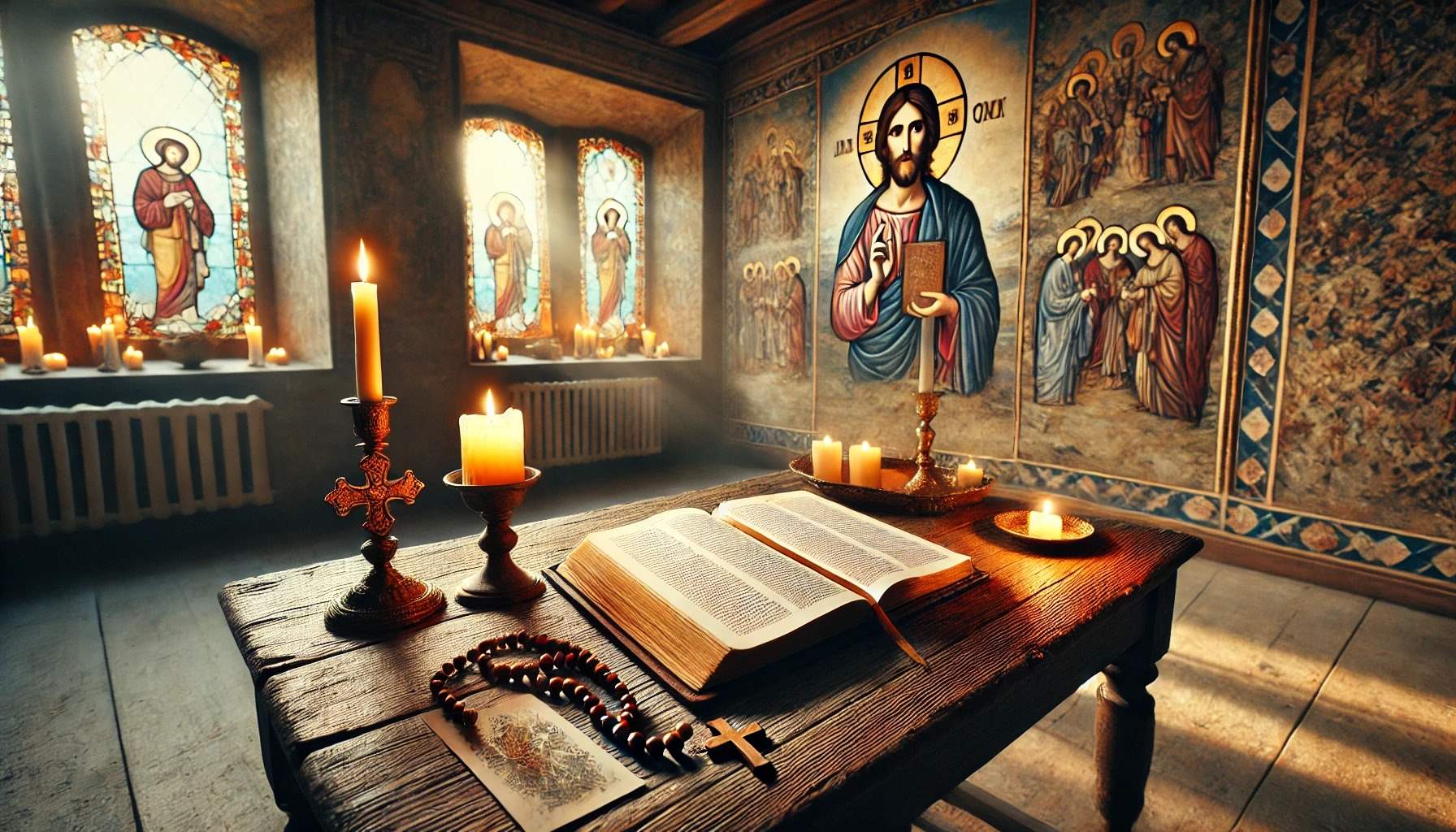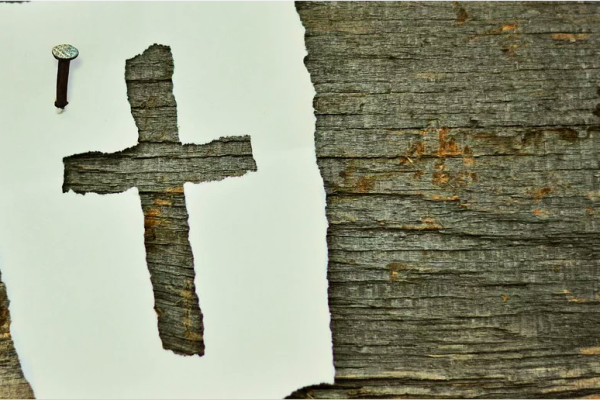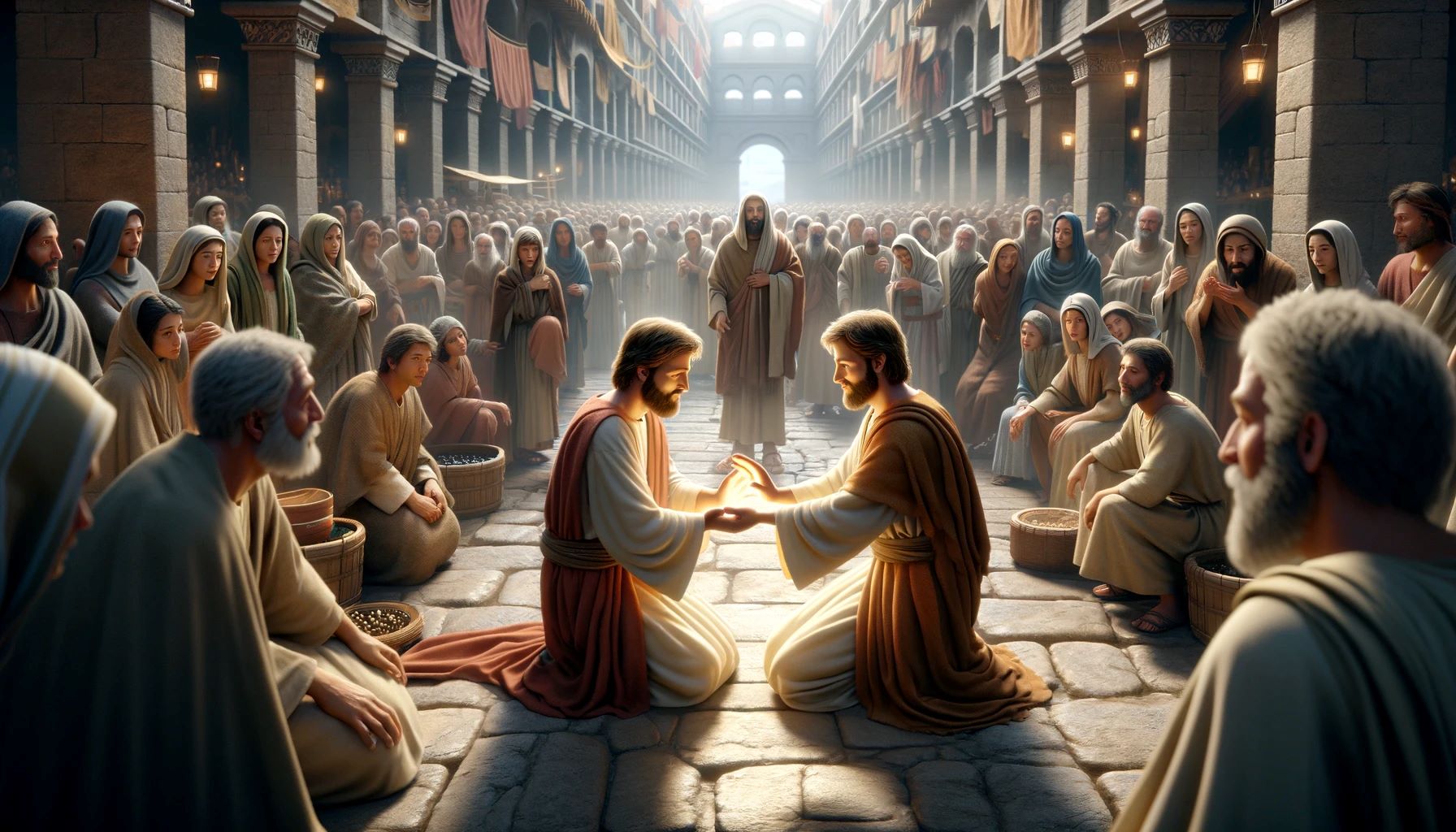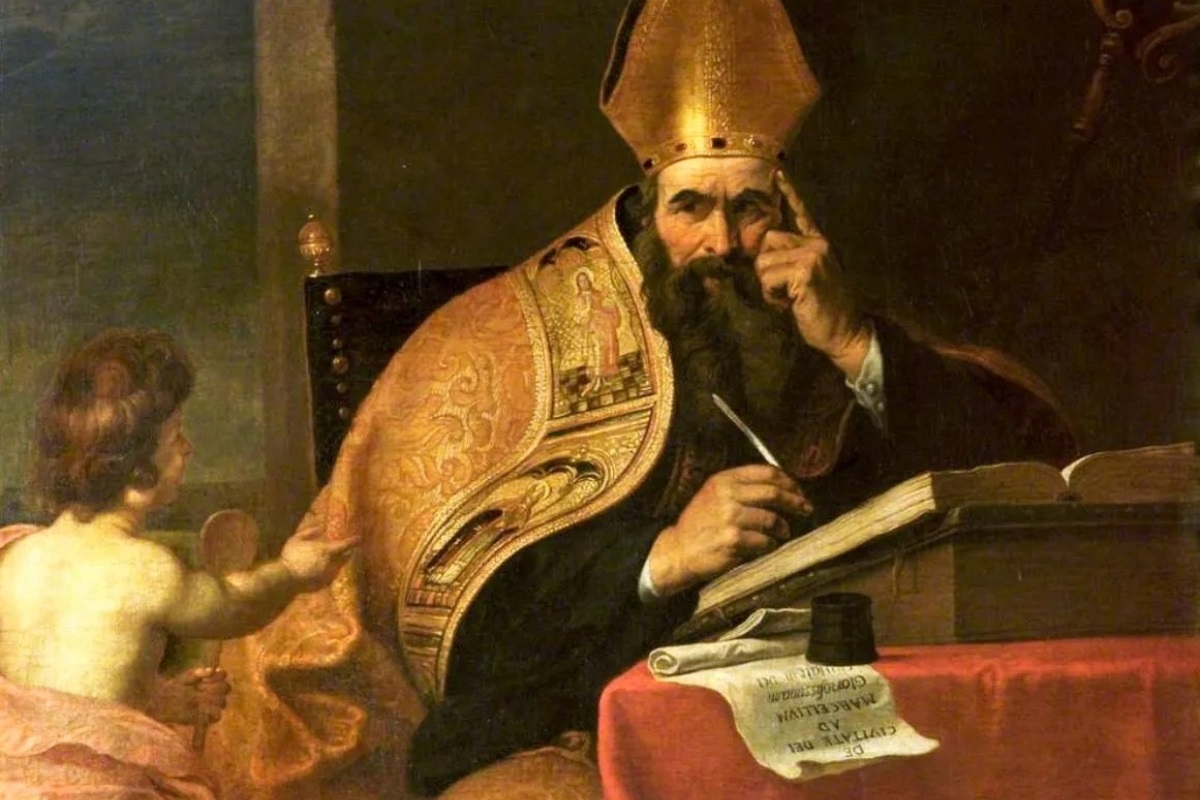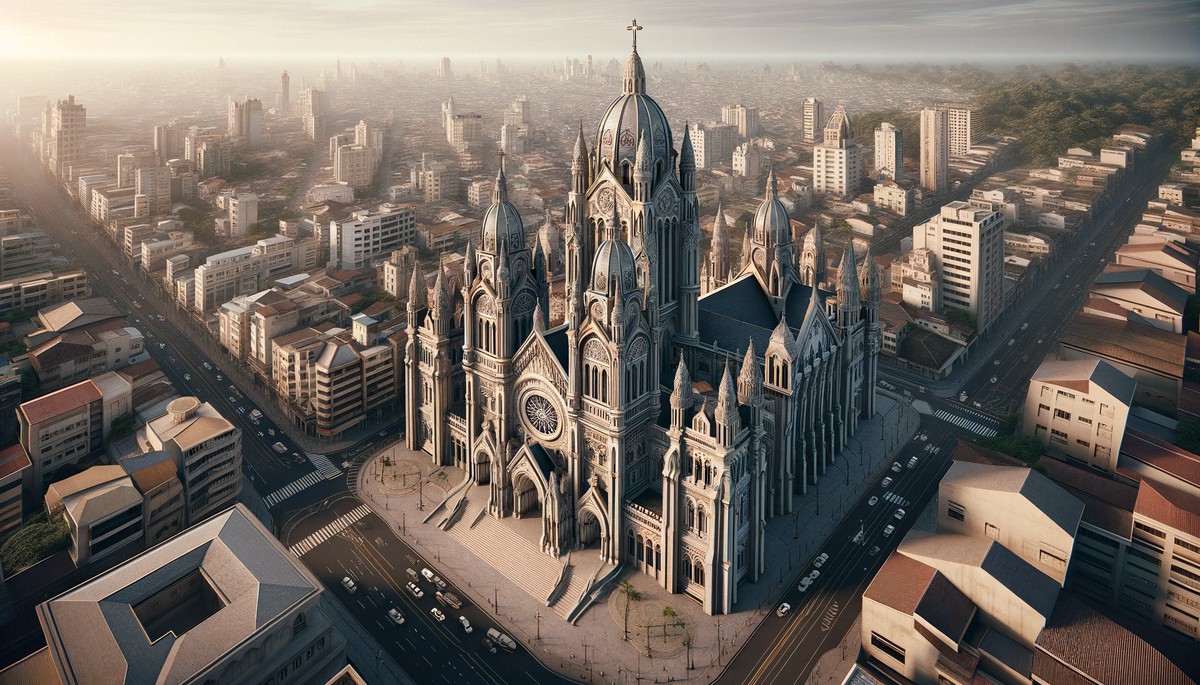Home>Arts and Culture>What Inspired Wiligelmo In His Creation And Fall Of Adam And Eve For The Modena Cathedral?
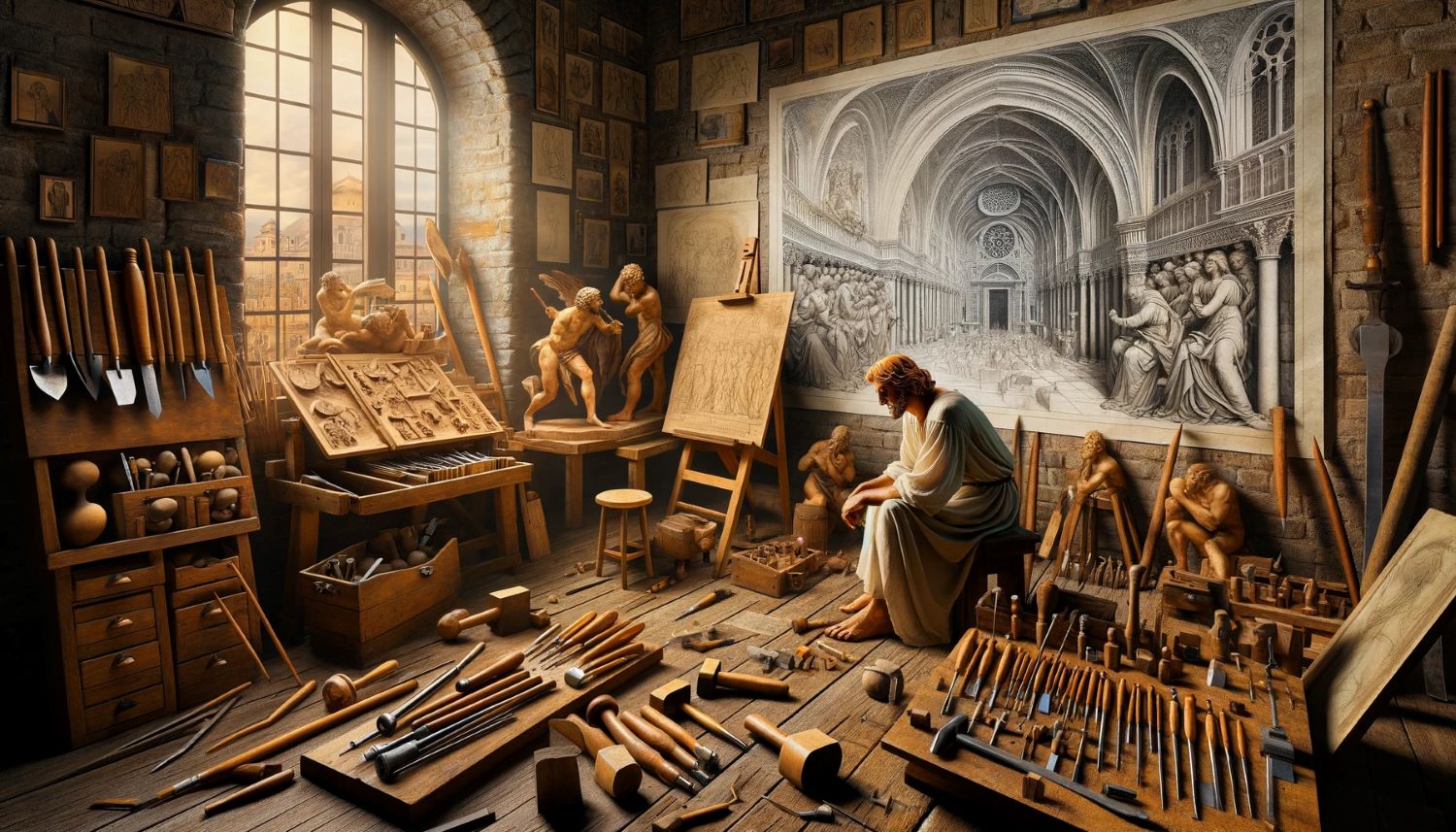

Arts and Culture
What Inspired Wiligelmo In His Creation And Fall Of Adam And Eve For The Modena Cathedral?
Published: February 15, 2024
Jason DeRose, Managing Editor at Christian.net, uses his expertise in religion and journalism to deepen understanding of faith's societal impacts. His editorial leadership, coupled with a strong academic background, enriches the platform’s diverse content, earning him recognition in both journalism and religious circles.
Discover the artistic inspiration behind Wiligelmo's Creation and Fall of Adam and Eve at Modena Cathedral. Explore the cultural significance and historical context of this masterpiece in arts and culture.
(Many of the links in this article redirect to a specific reviewed product. Your purchase of these products through affiliate links helps to generate commission for Christian.net, at no extra cost. Learn more)
Table of Contents
Introduction
The Modena Cathedral, a magnificent masterpiece of Romanesque architecture, stands as a testament to the artistic and cultural richness of the medieval era. Among the many awe-inspiring features of this grand cathedral, the sculptural masterpiece known as the Creation and Fall of Adam and Eve, created by the talented artist Wiligelmo, continues to captivate visitors with its intricate details and profound symbolism.
This remarkable sculpture, adorning the Modena Cathedral's west facade, serves as a visual narrative of the biblical story of Adam and Eve, depicting the pivotal moments of their creation, temptation, and expulsion from the Garden of Eden. As viewers gaze upon the intricately carved figures and the expressive portrayal of emotions, they are transported back in time to an era when art served as a powerful medium for storytelling and spiritual reflection.
Wiligelmo's creation is not merely a static representation of a religious narrative; it is a living testament to the artistic prowess and creative vision of its maker. The sculpture's enduring appeal lies in its ability to transcend the boundaries of time and culture, inviting viewers to contemplate the universal themes of human existence, morality, and the eternal struggle between good and evil.
As we delve into the world of Wiligelmo's Creation and Fall of Adam and Eve, we embark on a journey that unveils the artist's profound inspiration, the symbolism woven into the sculpture, and the enduring legacy that continues to resonate through the ages. Join us as we unravel the mysteries and marvels of this timeless masterpiece, delving into the depths of artistic ingenuity and spiritual contemplation.
Read more: Genesis 2: Adam & Eve | Bible Story (2020)
The Modena Cathedral
The Modena Cathedral, a revered architectural gem nestled in the heart of Modena, Italy, stands as a testament to the grandeur and spiritual significance of Romanesque art and design. Constructed between the 11th and 13th centuries, this majestic edifice embodies the fusion of religious devotion, artistic expression, and architectural innovation.
As visitors approach the cathedral, they are greeted by a striking facade adorned with intricate sculptures and decorative elements, each bearing the mark of master craftsmen and artisans of the era. The west facade, in particular, captivates the beholder with its richly carved reliefs and sculptures, serving as a visual symphony of biblical narratives and allegorical representations.
The exterior of the cathedral is a canvas of stone, meticulously carved to depict scenes from the Old and New Testaments, as well as symbolic motifs that speak to the spiritual and moral teachings of the Christian faith. Every sculpted figure, column, and archway exudes a sense of reverence and artistic virtuosity, inviting visitors to immerse themselves in the visual storytelling that adorns the sacred structure.
Stepping through the cathedral's portals, visitors are enveloped in a sanctuary of awe-inspiring beauty and spiritual contemplation. The interior of the Modena Cathedral boasts a harmonious blend of architectural elements, including majestic arches, ornately decorated columns, and a resplendent ceiling adorned with intricate frescoes.
The cathedral's sacred ambiance is further enhanced by the presence of revered relics, splendid altars, and revered artworks that bear testament to the enduring legacy of faith and artistic expression. As shafts of light filter through stained glass windows, casting a kaleidoscope of colors upon the stone floors, visitors are transported to a realm where the divine and the artistic converge in a symphony of transcendent beauty.
The Modena Cathedral stands not only as a place of worship but also as a living testament to the ingenuity and devotion of the artisans, architects, and patrons who contributed to its creation. Its enduring presence serves as a beacon of inspiration, inviting all who cross its threshold to partake in a timeless journey of spiritual reflection and artistic appreciation.
In the shadow of its soaring spires and amidst the hallowed halls, the Modena Cathedral continues to weave a tapestry of faith, art, and history, beckoning visitors to immerse themselves in the profound legacy of Romanesque architecture and the enduring power of human creativity.
The Modena Cathedral stands as a living testament to the artistic and spiritual richness of the medieval era, inviting visitors to embark on a journey of discovery and contemplation within its sacred walls.
Wiligelmo: The Artist Behind the Creation and Fall of Adam and Eve
Wiligelmo, a master sculptor of the 12th century, stands as the creative genius behind the iconic Creation and Fall of Adam and Eve sculpture adorning the west facade of the Modena Cathedral. His name, though shrouded in the mists of time, resonates through the annals of art history as a testament to his unparalleled skill and visionary craftsmanship.
Hailing from the town of Modena in Italy, Wiligelmo's artistic prowess transcended the limitations of his era, leaving an indelible mark on the world of medieval sculpture. His mastery of stone carving and his ability to breathe life into inert rock set him apart as a luminary of his craft. Through his hands, rough blocks of stone were transformed into eloquent expressions of human emotion and divine narrative.
Wiligelmo's contribution to the Modena Cathedral extends beyond the mere physical manifestation of his sculptures; it embodies a profound spiritual and cultural significance. His works, including the Creation and Fall of Adam and Eve, served as visual sermons, conveying the timeless teachings and moral allegories of the Christian faith to the illiterate masses of the medieval era.
The artist's deep understanding of theology and biblical narratives is evident in the meticulous details and emotive portrayals found in his sculptures. Each figure, each gesture, and each expression within the Creation and Fall of Adam and Eve sculpture reflects Wiligelmo's profound comprehension of the human condition and the spiritual dilemmas faced by humanity.
Wiligelmo's legacy as an artist of unparalleled skill and spiritual insight endures through the ages, transcending the boundaries of time and culture. His name is synonymous with artistic excellence and unwavering devotion to the craft, serving as an inspiration for generations of sculptors and artisans who followed in his footsteps.
As we stand in awe of the Creation and Fall of Adam and Eve, we are reminded of Wiligelmo's enduring legacy, a testament to the power of art to transcend the limitations of the human experience and touch the very essence of our souls.
Inspiration for the Creation and Fall of Adam and Eve
The inspiration behind Wiligelmo's Creation and Fall of Adam and Eve sculpture is deeply rooted in the theological and artistic milieu of the medieval period. Wiligelmo drew from a rich tapestry of religious narratives, philosophical contemplation, and the prevailing cultural ethos to breathe life into the stone and imbue his masterpiece with profound meaning.
At the heart of Wiligelmo's inspiration lies the sacred text of the Bible, specifically the Book of Genesis, which recounts the creation of the first man and woman, their idyllic existence in the Garden of Eden, and their eventual fall from grace. The biblical narrative provided the foundational framework for Wiligelmo's artistic interpretation, serving as a wellspring of spiritual and moral significance that resonated deeply with the medieval audience.
The medieval worldview, steeped in Christian theology and symbolism, permeated every aspect of artistic expression. Wiligelmo, as a devout artist of his time, sought to encapsulate the theological truths and moral teachings inherent in the biblical account of Adam and Eve within the confines of stone. His sculpture, therefore, became a visual embodiment of the Christian understanding of human nature, the consequences of disobedience, and the promise of redemption.
Furthermore, the socio-cultural context of the medieval era, characterized by a collective consciousness shaped by religious fervor and a keen awareness of the human condition, provided fertile ground for Wiligelmo's artistic vision. The pervasive influence of the Church, the prevailing belief in the duality of sin and salvation, and the yearning for spiritual enlightenment converged to inform and inspire the creation of the sculpture.
Wiligelmo's inspiration also emanated from the artistic traditions and stylistic conventions of his time. Drawing from the legacy of classical sculpture and the Byzantine artistic heritage, he skillfully integrated elements of naturalism, expressive form, and symbolic motifs into his work. The interplay of these artistic influences, coupled with his own creative ingenuity, culminated in a sculpture that transcended mere representation, becoming a profound meditation on the human experience and the divine narrative.
In essence, Wiligelmo's inspiration for the Creation and Fall of Adam and Eve stemmed from a harmonious fusion of biblical narratives, theological insights, cultural ethos, and artistic traditions. His sculpture stands as a testament to the enduring power of art to encapsulate the complexities of the human spirit and to convey timeless truths that resonate across centuries.
Symbolism in Wiligelmo's Sculpture
Wiligelmo's sculpture, the Creation and Fall of Adam and Eve, is a rich tapestry of symbolism that transcends the boundaries of time and culture, inviting viewers to delve into its profound allegorical significance. At its core, the sculpture serves as a visual parable, weaving together a myriad of symbolic elements that convey profound theological, moral, and existential truths.
The portrayal of Adam and Eve, the central figures in the narrative, embodies a multiplicity of symbolic layers. Adam, sculpted with a contemplative gaze and a posture of introspection, represents not only the first man but also the archetype of humanity itself. His form, crafted with a sense of dignified vulnerability, encapsulates the universal human experience of grappling with moral choices and the consequences of free will.
Eve, depicted with a poignant expression and a gesture of reaching towards the forbidden fruit, embodies the timeless symbol of temptation and the allure of forbidden knowledge. Her presence in the sculpture serves as a poignant reminder of the perennial human struggle with temptation and the inherent frailty of human nature.
The serpent, coiled around the Tree of Knowledge, assumes a dual symbolic role, representing both the embodiment of deceit and the catalyst for humanity's fall from grace. Its sinuous form and penetrating gaze evoke a sense of foreboding, encapsulating the insidious nature of temptation and the consequences of succumbing to moral transgression.
The Tree of Knowledge itself stands as a potent symbol of the moral and existential dichotomy faced by Adam and Eve. Its branches, laden with the forbidden fruit, serve as a visual metaphor for the choices that define the human experience, juxtaposing the allure of worldly knowledge with the divine injunction of obedience.
The composition of the sculpture, with its intricate interplay of figures and the dynamic portrayal of emotions, serves as a visual symphony of symbolism, inviting viewers to contemplate the profound truths encapsulated within its stone-carved forms. Each element, from the expressive gestures of the figures to the meticulously rendered details of the natural world, contributes to the overarching symbolism that permeates the sculpture.
In essence, Wiligelmo's Creation and Fall of Adam and Eve transcends its role as a mere artistic representation; it becomes a profound meditation on the human condition, the struggle between good and evil, and the eternal quest for spiritual redemption. Through its symbolism, the sculpture continues to resonate as a timeless testament to the enduring power of art to convey profound truths and evoke contemplation across generations.
Legacy of Wiligelmo's Creation and Fall of Adam and Eve
Wiligelmo's Creation and Fall of Adam and Eve stands as a timeless testament to the enduring legacy of medieval sculpture and the profound impact of artistic expression on the human spirit. Its legacy transcends the confines of the Modena Cathedral's west facade, resonating through the annals of art history and leaving an indelible mark on the collective consciousness of humanity.
The sculpture's legacy is deeply rooted in its ability to transcend the limitations of time and culture, inviting viewers from across the ages to partake in a visual journey of spiritual contemplation and artistic appreciation. Through its enduring presence, the sculpture continues to serve as a bridge between the medieval era and the contemporary world, offering a glimpse into the artistic ingenuity and spiritual fervor of its creator.
Furthermore, Wiligelmo's masterpiece has left an indelible imprint on the evolution of sculptural art, inspiring generations of artists and craftsmen to delve into the depths of human emotion and divine narrative. Its influence reverberates through the corridors of art institutions and creative ateliers, serving as a touchstone for aspiring sculptors seeking to imbue their works with profound meaning and timeless relevance.
The Creation and Fall of Adam and Eve also holds a place of reverence in the realm of theological and philosophical discourse, sparking contemplation on the enduring themes of human existence, morality, and the eternal struggle between good and evil. Its symbolism and emotive portrayal of the biblical narrative continue to ignite intellectual inquiry and spiritual introspection, inviting scholars and theologians to unravel its profound layers of meaning.
Moreover, the sculpture's legacy extends beyond the confines of the art world, permeating popular culture, literature, and the collective imagination. Its imagery has been reimagined and reinterpreted in various forms, becoming a source of inspiration for storytellers, filmmakers, and creators across diverse mediums.
In essence, the legacy of Wiligelmo's Creation and Fall of Adam and Eve endures as a beacon of artistic excellence, spiritual contemplation, and cultural resonance. Its profound impact on the realms of art, theology, and human creativity serves as a testament to the enduring power of artistic expression to transcend the boundaries of time and leave an indelible imprint on the human experience.



